|
‘Marching to hell’: Why young men are still choosing to become Catholic priests
By Gary Nunn
news.com.au
October 13, 2019
https://bit.ly/31bcgRN
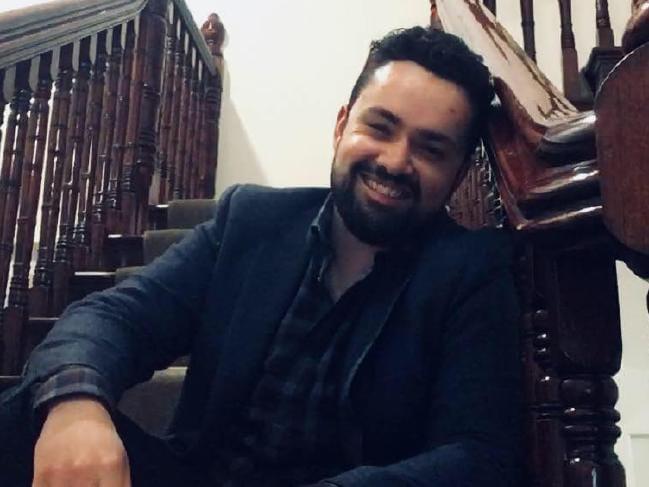 |
| Samuel Pearson, 28, is in training for a career as a Catholic priest. |
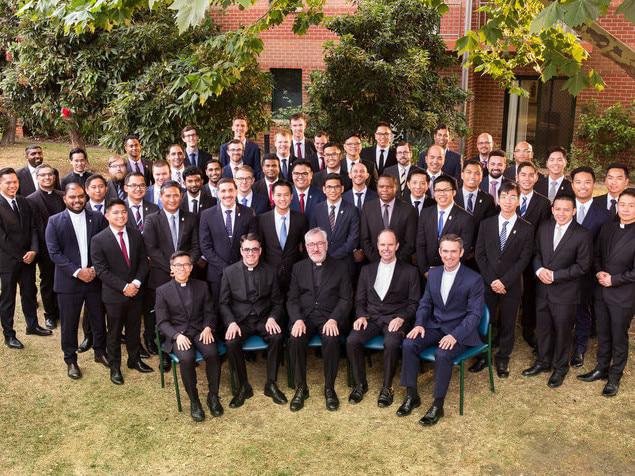 |
| Australia’s biggest seminary is bursting at the seams, with more students than ever before. |
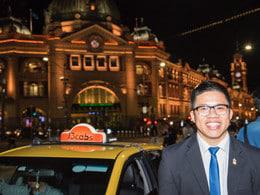 |
| Huy Nguyen, 27, is studying to become a priest but admits he finds the celibacy a 'challenge'. |
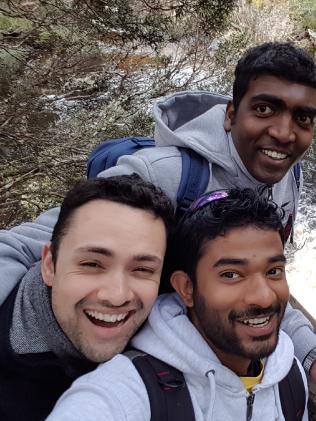 |
| Chathura Silva, centre, with friends. |
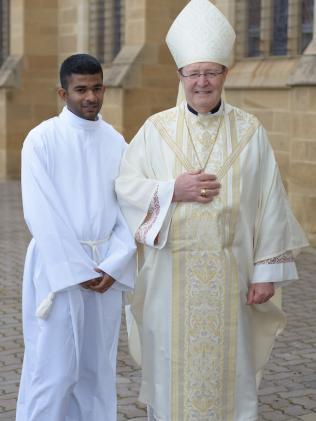 |
| Chathura Silva is also 28 and looks forward to a career in the Catholic Church. |
[with video]
They’re in their sexual prime — but these men and others like them are flocking to a career that demands they swear off sex for life.
Why are young men still choosing to become Catholic priests? It’s a fair enough question to ask any trainee priest in the current Australian climate: who, today, is choosing to devote their entire lives to the Catholic Church?
In the context of George Pell’s imprisonment, the Catholic Church having the most cases in the Royal Commission into child sexual abuse, stories of paedophile priests moved from parish to parish and plummeting church attendance, few would dispute that the once juggernaut institution is in crisis.
The answer, then, might surprise you.
I was given rare access within the Catholic Church’s notoriously tight PR machine to three young trainee priests all based within Australia’s largest seminary: Melbourne’s Corpus Christi College — where Pell himself studied and the heartland of a network of paedophile priests who operated there in the 1970s.
I ask what motivated them to give their lives over to an institution facing such momentous challenges.
What won’t surprise you, is they’re all male — only men can deliver public sermons within the orthodox tradition.
Samuel Pearson, 28, from Glenroy, Melbourne, came from “a pretty ordinary Catholic family” he says, but it wasn’t till his university days that he began considering priesthood: “Being an arts/humanities student put me in the midst of militant Marxists and pugnacious progressives,” he tells news.com.au.
“I was confronted by many who were actively hostile to the values that unconsciously defined who I am. Anti-Christian quips in tutorials were common.”
This “zealously godless campus culture,” as Samuel describes it, led to an “existential crisis” and, ultimately, his calling. Once the idea of priesthood entered his head, it felt right. “I was like a guy who just met the girl of his dreams and would smile goofily when he saw her!” he says.
He remembers the sunny day he made the call to the Catholic vocations office, having first sat in the gardens of St Patrick’s Cathedral in prayer for over an hour: “My heart was pounding,” he confesses. “This was the first person I’d told I think God may be calling me to be a priest.”
BUSIER THAN EVER?
Here’s the thing: Australia’s largest priest training college, where Samuel studies, is actually busier than ever.
Twenty years ago, it hosted between 15 and 20 trainee priests (known as seminarians.) Today, there are 50.
In fact, the intake of seminarians this year was double the average: 10 young men were accepted onto the seven-year training program; it’s usually between five and six.
They sound like healthy figures indeed, for an institution battling not just internal challenges, but external ones too. As countries like Ireland and Australia have recently legalised same-sex marriage and (soon in NSW) abortion, more are likely to question Catholic doctrine’s applicability to modern life.
IMPORTING CATHOLICS
But here’s the other thing — of the three trainee priests fielded to speak to me, just one was born in Australia.
The other two were coaxed here by Catholic “Vocational Directors” who travel overseas to encourage young would-be priests to devote their lives to the Catholic Church in Australia.
For Chathura Silva, 28, who was already involved in the Catholic Church in Sri Lanka, it sounded like a big prospect.
“I was 23 and had never before thought about going overseas,” he says. “The priest said Australian placements in general were lacking, but especially in Tasmania — where my Aunty lives. I prayed about it for a year, then decided to move.”
For the last three years, half or more of all student priests at Australia’s biggest college had overseas passports.
Importing young Catholic men from overseas can initially be a lonely experience for the men suddenly transported to a new country.
Huy Nguyen, 27, moved here four years ago after an Australian Vocations Director came to his seminary in Vietnam to ask if any young seminarians wanted to complete their priest training to fill gaps in Australia. Fifty put their hand up, six were interviewed and Huy was one of only two selected.
He still remembers his first day here — the first day of winter. “I remember it was cold, all doom and gloom,” he says. “I felt very lonely and it was very boring here in the winter — not many people on the street.”
The culture shock took a while to get his head around. “At first I found it hard to trust myself in Australia,” Huy says. “I’m not used to such enormous freedom, and had to discover how to handle it in my own way. In Vietnam, you’re told to do things by parents, the church and society. Sometimes, here, I didn’t know how to use that freedom.”
Huy remembers the unusual way he heard his calling. “When I was in year 12, my dad had a stroke and was paralysed. I felt deeply disappointed and overwhelmed — I just prayed to god — what does it mean?”
He realised some of his prayers had actually been answered but “in a different way” from how he expected. “I prayed to God all my life to keep dad at home, rather (than) out drinking beers — and then dad did stay at home. He’s been bedridden at home for 10 years in a wheelchair.”
Samuel says the student priests are reflecting the Melbourne multicultural community they come from: “We’re Aussies, Filipinos, Italians, Vietnamese, Indians, Zimbabweans … a veritable United Nations and somehow we make it work. In many ways the seminary today would be unrecognisable to the generation of priests now retiring.”
The 50 seminarians come from 10 countries of origin.
Catholic World Youth Day, introduced by Pope John Paul II, has also been named as a majorly successful recruitment tool. Two years ago it was in Sydney and next year’s event will be in Perth.
JOINING THE CHURCH FROM OVERSEAS
Did they know they were joining a Catholic Church within a country plagued by scandal?
It was something Chathura knew about and struggled with: “It was very challenging for me to understand how a place that’s supposed to protect people can abuse children” he says. “I want to change the perception that all priests are paedophiles by rebuilding trust with young people and bringing them back to the faith.”
But for Huy, it wasn’t a big concern: “I don’t worry about it too much — it has happened in every generation at every time, and those responsible must be held accountable” he says. “I want to focus on my vocation — it’d be confusing or distracting if I worried too much about this.”
SEMINARY LIFE
After a rigorous selection process which can last up to two years — involving psychological assessments and robust screening — would-be priests begin their seven-year training (“formation”). This has four dimensions: human; spiritual; academic and pastoral. It includes a theological degree and placements in schools, hospitals, nursing homes or prisons.
All 50 seminarians have their own room with an en suite, but share a dining room — with Stan and Netflix on rotation (“but nothing that contradicts our faith”, Chathura says) and have access to two shared kitchens. They have raffle nights, table tennis and outdoor cricket, plus a very competitive inter-seminary soccer tournament. They might nip to the pub for a drink, but don’t get drunk.
BEING A CHRISTIAN IS AN ACT OF REBELLION
The rector of the college, Reverend Denis Stanley tells news.com.au he believes the reason young men are attracted to the priesthood is the very reason it’s a dramatic, challenging and demanding decision.
“To be a Christian now, to put up your hand and say you are one, requires a lot of courage — it’s a very countercultural statement — especially in the West” he says.
CELIBACY AND THE SEAL
Australia’s Royal Commission into child sexual abuse recommended breaking the seal of confession for child sexual abuse cases, and celibacy becoming a voluntary rather than mandatory expectation of priests.
Celibacy is still expected, something Huy finds challenging: “As young person, I still struggle with this. Sometimes I ask my advice from close friends about how I cope with these sexual urges that emerge within you” he says. “I pray a lot so I feel — not comfortable — but peaceful.”
At the time of interviewing the seminarians, the Victorian government introduced legislation for mandatory reporting of abuse for religious ministries, involving removing the confessional seal for suspected abuse.
Melbourne’s Catholic archbishop insisted three years jail was preferable to breaking the seal of confession and reporting child sexual abuse to authorities.
Samuel agrees: “If I need to join my Archbishop in prison to safeguard the sacred process of repentance, then so be it” he says. “I will march into hell for that heavenly cause.”
|




